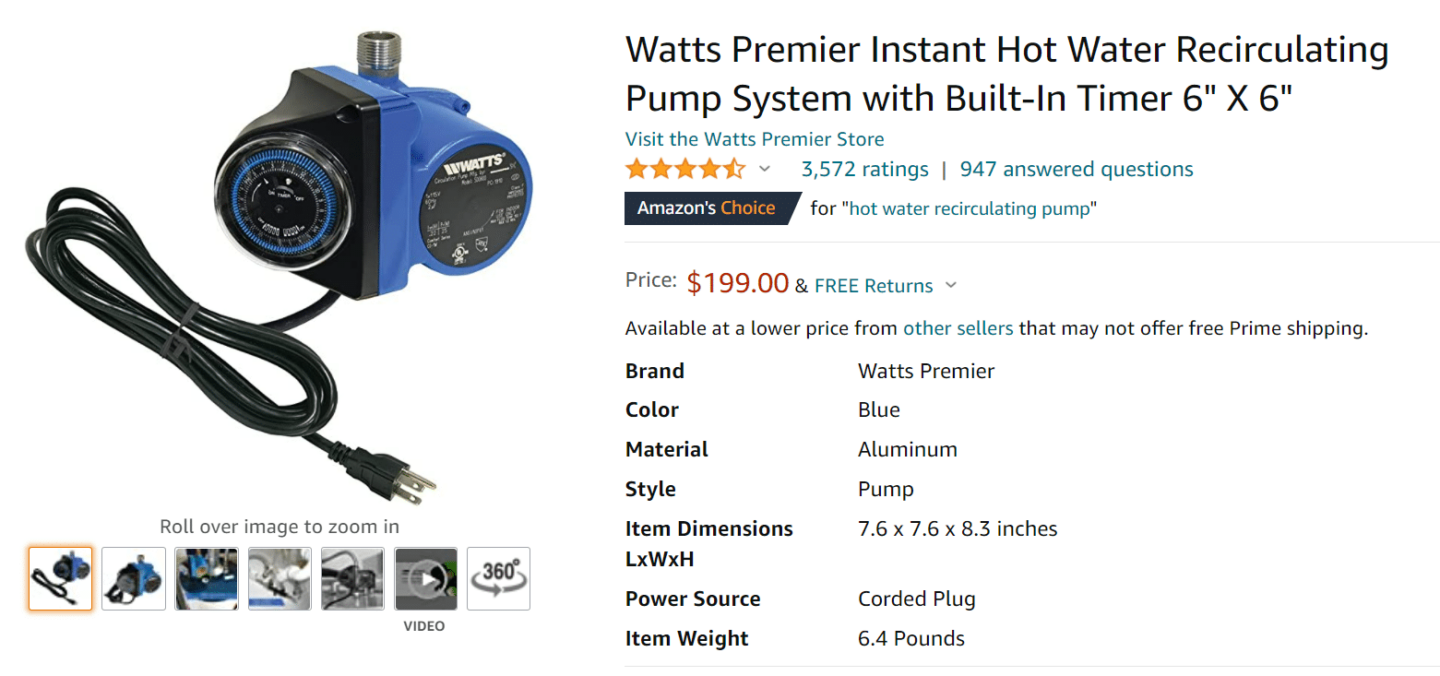Water Heater Recirculating Pump : Why And How Does It Work?

What is a Hot Water Recirculating Pump and How Does It Benefit Your Home?
Every homeowner knows the inconvenience of waiting for hot water to arrive at their faucet, especially if the plumbing system is expansive, or the hot water pipes have just been updated. During this waiting period, not only is time wasted but a lot of water too. Enter the solution to this annoyance: the recirculating hot water pump.
A hot water recirculating pump, also known as a recirculation pump or water heater recirculating pump, is a device that instantly delivers heated water to your faucet, reducing the time you spend waiting. It plays a crucial role in recirculating systems, ensuring hot water availability on demand and reducing wastage.
Functionality of a Hot Water Recirculating Pump
The recirculating pump works by creating a loop between your water heater and the desired faucet, thereby continuously keeping hot water circulating in your hot water pipes. Any unused hot water is drawn back to the water heater through a return line, eliminating the frustrating delay of hot water arrival.
Working Mechanism of Hot Water Recirculating Systems
When the pump is activated by a temperature sensor or a timer, it pushes the hot water from the water heater into the hot water line and pulls in the cold water in the pipes, redirecting it back to the water heater via the return line. This way, it maintains a consistent temperature in your hot water pipes, ready to be used when needed.
Hot water recirculating systems utilize a check valve to control the direction of water flow, ensuring the water only moves in the intended direction and prevents it from entering the cold water line.
Benefits of Having a Recirculating Pump Installed
Water Conservation
One of the primary advantages of having a hot water recirculating pump installed in your home is the significant water conservation it ensures. An average four-person family can waste up to 180 gallons of water per week while waiting for hot water. With a recirculating pump, this wastage can be drastically reduced, contributing to your home’s overall water conservation efforts.
Decreased Water Bills
Installing a hot water recirculating pump can also lead to significant savings on your water bill. Although there’s an upfront installation cost, the long-term savings accrued from reduced hot water usage make the investment worthwhile.
Instant Hot Water On-Demand
With a recirculating pump installed, waiting for hot water to reach your faucet becomes a thing of the past. Whether you’re running a bath, doing the dishes, or starting a load of laundry, you have hot water ready instantly. This convenience saves time and adds a layer of efficiency to your daily routines.
Why Do You Have to Wait for Hot Water?
The delay in hot water arrival is due to the distance between your hot water heater and the faucet, and the diameter of your water pipes. If your heater is located far from the faucet, or the pipes are wide, the water has a longer distance to travel, leading to a longer wait time.
Also, larger pipes can hold more water, meaning they have to move a lot of water before the hot water can reach your faucet. The flow rate remains consistent irrespective of the pipe size, which means larger pipes will require more time for hot water to arrive.
The Role of the Water Heater Temperature
Setting your water heater to an optimum temperature is key to getting hot water faster. If you run out of hot water during a shower, it signifies a different problem, and a hot water recirculation pump will not solve it. In such cases, a check on your water heater, or even a switch to tankless water heaters, may be necessary.
What else can you improve?
There are several other aspects you can consider to enhance your water heating system. Regular water heater maintenance is paramount to keep it efficient and functioning at its optimum capacity. This involves draining the tank periodically to remove any sediment build-up which can reduce its effectiveness and energy efficiency. It’s also beneficial to inspect and replace the anode rod if necessary, as it plays a crucial role in preventing corrosion in your water heater tank.
One highly effective solution is to install a Corro-Protec anode, a type of powered anode rod. Unlike sacrificial anodes that deplete over time, Corro-Protec anodes provide a constant, low-level electrical current that protects your tank from corrosion for a longer duration. This not only improves the lifespan of your water heater but also eliminates the production of any unpleasant sulfuric odors. By combining regular maintenance and the implementation of effective anti-corrosion solutions like Corro-Protec anodes, you can further improve your water heating system’s efficiency and durability.
Conclusion
A hot water recirculating pump is an efficient way to provide instant hot water on demand, reducing water wastage and saving you time. So, next time you’re stuck waiting for your shower to heat up, remember that a solution like a recirculating pump can make your life easier and contribute to environmental conservation at the same time.
Whether it’s through a traditional water heater recirculating pump or more modern recirculating systems for tankless water heaters, this innovative solution has revolutionized home plumbing systems.





Recirculating pump? Why you would need one.
Are you tired of having to wait for hot water to reach your faucet every time you turn the water on?
A hot water recirculating pump is a type of system that pumps hot water to faucets quickly. If you don’t have a hot water recirculating pump installed in your home, it may take a long time to get hot water to arrive at your faucet.
Or it might be that the heating elements are defective due to limescale or metal deposits.
Either way, the Corro-Protec technology will considerably reduce the limescale accumulation or deposits at the bottom of the tank which in turn will protect the heating elements. Plenty of hot water will come your way!
Blog
Troubleshooting: Why Your Hot Water Heater Is Not Working
When you want a warm bath or shower but only get cold water, it can be really annoying. If your hot water heater isn’t working, […]
10 Ways to Save Water at Home
Reducing the amount of water you use at home is not only better for the environment but also better for your pockets. Learn 10 ways […]


